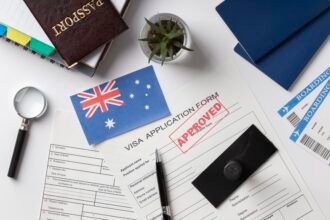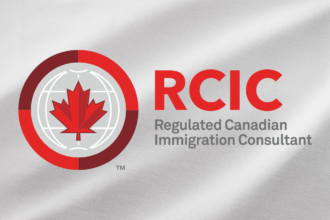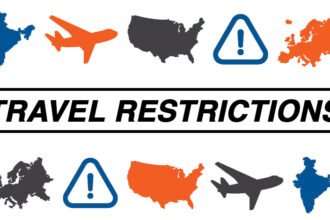Immigration is often a complex journey, and many visa holders may wish to bring their dependent family members along to live with them in the destination country. Whether for reasons of family unity, support, or care, adding dependents to an existing visa is a critical process that requires careful attention to legal requirements, documentation, and timing.
This article explores in detail how to add dependent family members to an existing visa. It covers definitions, eligibility, procedures, required documents, common challenges, and country-specific guidelines, making it an essential guide for visa holders seeking to unify their families abroad.
What is a Dependent Family Member?
A dependent family member typically refers to relatives who rely on the primary visa holder for financial and emotional support. Most immigration systems define dependents as:
-
Spouses or civil partners
-
Unmarried children under a certain age (usually 18 or 21)
-
Sometimes, other relatives such as elderly parents or guardians, depending on the visa and country
The exact definition varies by country and visa category, so it is essential to consult specific immigration guidelines.
Why Add Dependent Family Members to an Existing Visa?
Adding dependents helps ensure:
-
Family Unity: Allowing families to live together during work, study, or other visa activities.
-
Support Systems: Dependents can provide emotional and practical support.
-
Legal Residency: Dependents can legally live, and in some cases work or study, in the host country.
-
Access to Services: Eligibility for healthcare, education, and social services.
Types of Visas That Allow Adding Dependents
Many visa categories permit the addition of dependents, including but not limited to:
-
Work visas (e.g., H-1B in the US, Skilled Worker in the UK)
-
Student visas
-
Family visas
-
Business or investor visas
-
Temporary residence visas
Each visa type has different rules on who qualifies as a dependent and the application process for adding them.
Step-by-Step Guide: How to Add a Dependent Family Member
Step 1: Confirm Eligibility
Before starting the process, verify that the visa category allows for dependents and understand who qualifies as a dependent. Most immigration authorities publish official lists and criteria.
Step 2: Gather Required Documentation
Common documents needed include:
-
Proof of relationship (marriage certificate, birth certificate)
-
Valid passports for dependents
-
Proof of financial means or sponsor’s income
-
Existing visa holder’s documents (visa, passport, biometric data)
-
Evidence of accommodation and intent to reside together
-
Completed visa application forms for dependents
Step 3: Complete the Application Form
Each country has specific application forms for adding dependents. Often these are online but can be paper-based. Accuracy is crucial to avoid delays or rejections.
Step 4: Pay the Application Fees
Fees vary depending on the country and visa type. They can include visa application fees, biometric fees, and healthcare surcharges.
Step 5: Submit Biometrics and Attend Interviews
Some immigration authorities require dependents to provide biometric data (fingerprints, photos) and attend visa interviews.
Step 6: Wait for Processing
Processing times vary significantly. It is advisable to apply well in advance of the dependent’s intended travel or move date.
Step 7: Receive Visa and Travel
Once approved, dependents receive visas or residence permits allowing entry and stay. Some visas allow dependents to work or study, subject to conditions.
Country-Specific Guidelines and Procedures
United Kingdom
In the UK, dependents of work visa holders (e.g., Skilled Worker Visa) can apply to join or remain with the main applicant. Dependents must prove the relationship and meet financial thresholds.
-
Application Portal: UK Visas and Immigration
-
Key points: Dependents can work or study in the UK. The sponsor must meet a minimum income requirement (£18,600 or more, depending on circumstances).
United States
In the US, dependents usually apply for dependent visas such as H-4 (for H-1B visa holders) or F-2 (for student visa holders).
-
Application Portal: US Citizenship and Immigration Services (USCIS)
-
Key points: H-4 visa holders can apply for work authorization under specific conditions, such as the principal applicant pursuing permanent residency.
Canada
Canada’s work permit and study permit holders can sponsor dependents for open work permits or study permits.
-
Application Portal: Immigration, Refugees and Citizenship Canada (IRCC)
-
Key points: Dependents may be eligible to work or study freely in Canada.
Australia
Australia allows spouses and children of temporary visa holders (e.g., Temporary Skill Shortage visa) to join under dependent visas.
-
Application Portal: Australian Department of Home Affairs
-
Key points: Dependents can work and study depending on visa conditions.
Financial Requirements and Sponsorship Obligations
Most countries require the primary visa holder or sponsor to prove they can financially support dependents without recourse to public funds.
-
This often includes showing bank statements, employment letters, or tax returns.
-
The sponsor may need to sign a legally binding undertaking or affidavit.
-
Failure to meet financial requirements can lead to rejection.
Work and Study Rights of Dependents
The ability of dependents to work or study depends on:
-
The type of visa they hold
-
Host country immigration laws
-
Specific visa conditions
For example:
-
UK dependents on Skilled Worker visas can work full-time.
-
US H-4 visa holders may need an Employment Authorization Document (EAD).
-
Canadian dependents on open work permits can work without restrictions.
Understanding these rights is essential to maximize the benefit of dependent visas.
Common Challenges and How to Overcome Them
Delays and Processing Times
-
Processing times can be lengthy, sometimes up to several months.
-
Applying early and ensuring all documentation is complete reduces delays.
Documentation Issues
-
Missing or incorrect documents are common causes of refusal.
-
Use checklists provided by immigration authorities.
-
Seek professional help if unsure.
Financial Evidence
-
Sponsors should prepare detailed financial evidence well in advance.
-
Consulting immigration advisors can help clarify requirements.
Changing Immigration Rules
-
Visa and dependent policies may change unexpectedly.
-
Stay updated through official government websites.
Tips for a Successful Application
-
Start Early: Begin the application process as soon as possible to avoid separation.
-
Maintain Valid Status: The primary visa holder should ensure their visa remains valid during the process.
-
Keep Communication Records: Evidence of contact and cohabitation strengthens the case.
-
Use Official Sources: Always refer to government websites for forms and guidance.
-
Consult Professionals: When in doubt, immigration lawyers or accredited agents provide valuable assistance.
Conclusion
Adding dependent family members to an existing visa is a critical step in ensuring family unity during international relocations. While the process may seem daunting, understanding the eligibility criteria, documentation requirements, and country-specific procedures can help applicants navigate the process with confidence.
By carefully preparing applications, adhering to legal requirements, and keeping abreast of current immigration policies, visa holders can successfully secure dependent visas, allowing their loved ones to live, work, and thrive alongside them in their new country.
Useful Official Links



